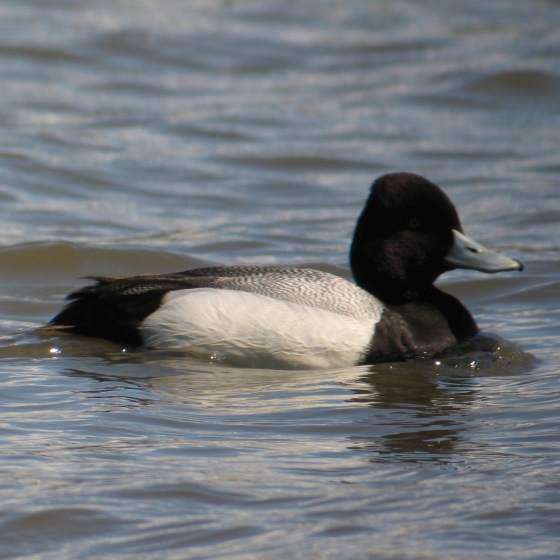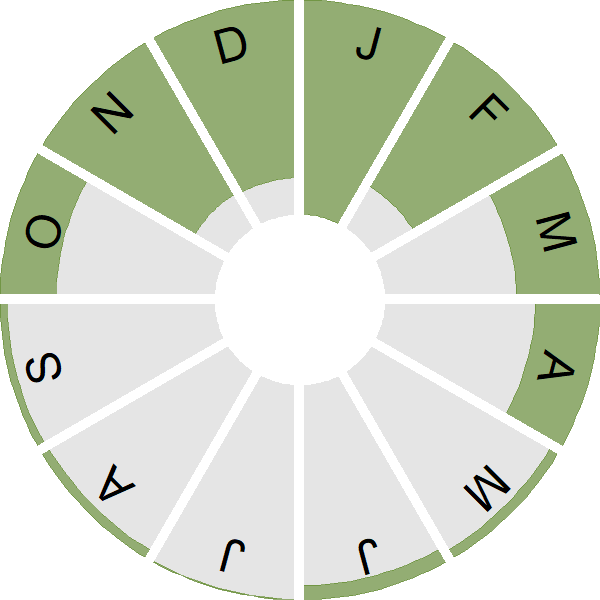Lesser Scaup

Introduction
Difficult to separate from the more familiar (Greater) Scaup, so the first accepted record of this rare visitor from North America was only in the 1980s. Most arrive in winter but several individuals have stayed on beyond this.
Lesser Scaup chicks are capable of diving under water when they hatch but are too buoyant to stay under. By the time they are five to seven weeks old they can dive for up to 25 seconds and swim underwater for 50 to 60 feet.

Key Stats
Status and Trends
Conservation Status
Population Size
Population Change
Population trends of this scarce species are not routinely monitored.
Distribution
This species is a rare vagrant and was recorded during Bird Atlas 2007–11 as shown on the map.
Occupied 10-km squares in UK
or view it on Bird Atlas Mapstore.
or view it on Bird Atlas Mapstore.
Distribution Change
This vagrant has been recorded in several atlases so we have been able to map distribution changes. However, as a rarity these may not show a consistent pattern of change.
or view it on Bird Atlas Mapstore.
Seasonality
Lesser Scaup is a rare vagrant, mostly recorded in winter.
Weekly pattern of occurrence
The graph shows when the species is present in the UK, with taller bars indicating a higher likelihood of encountering the species in appropriate regions and habitats.

Movement
Britain & Ireland movement
Foreign locations of birds ringed or recovered in Britain & Ireland
Dots show the foreign destinations of birds ringed in Britain & Ireland, and the origins of birds ringed overseas that were subsequently recaptured, resighted or found dead in Britain & Ireland. Dot colours indicate the time of year that the species was present at the location.
- Winter (Nov-Feb)
- Spring (Mar-Apr)
- Summer (May-Jul)
- Autumn (Aug-Oct)

Biology
Survival and Longevity
Survival is shown as the proportion of birds surviving from one year to the next and is derived from bird ringing data. It can also be used to estimate how long birds typically live.
View number ringed each year in the Online Ringing Report.
Classification, names and codes
Classification and Codes
- Order: Anseriformes
- Family: Anatidae
- Scientific name: Aythya affinis
- Authority: Eyton, 1838
- BTO 2-letter code: AY
- BTO 5-letter code: LESSC
- Euring code number: 2050
Alternate species names
- Catalan: morell petit
- Czech: polák vlnkovaný
- Danish: Lille Bjergand
- Dutch: Kleine Topper
- Estonian: väike-merivart
- Finnish: pikkulapasotka
- French: Petit Fuligule
- German: Kanadabergente
- Hungarian: búbos réce
- Icelandic: Kúfönd
- Irish: Mionlacha Iascán
- Italian: Moretta grigia minore
- Latvian: maza kerra
- Lithuanian: mažoji žiloji antis
- Norwegian: Purpurhodeand
- Polish: ogorzalka mala
- Portuguese: negrelho-americano
- Slovak: chochlacka vlnkovaná
- Slovenian: ameriška rjavka
- Spanish: Porrón bola
- Swedish: mindre bergand
- Welsh: Hwyaden Benddu Fechan

